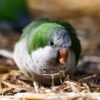- How Long Does A Quaker Parrot Live? - 17 May 2024
- 4 Hacks on Keeping Your Home Clean With Pets - 28 March 2024
- 5 Things to Know Before Bringing Home a New Kitten - 26 March 2024
Summer often beckons us outdoors, eager to bask in the sun’s glow. However while we enjoy the sun it’s essential to remember that our furry companions experience heat differently. Heatstroke, a potentially life-threatening condition can quickly set in if precautions aren’t taken. This article will provide into the causes, symptoms, prevention, and actions to take in case of heatstroke in dogs and cats.
Understanding Heatstroke
Heatstroke, also known as hyperthermia, occurs when an animal’s body temperature rises above the safe range and becomes unable to regulate its temperature effectively. This can lead to cellular damage, organ failure, and, in severe cases, death.
Causes of Heatstroke in Dogs and Cats
Heatstroke in cats and dogs is more common in the summer months but can occur at any time of the year. Here are the top causes of heatstroke in pets:
- Excessive Heat and Humidity: Exposure to high temperatures and humidity is a common cause of heatstroke. Pets can quickly overheat in hot weather, especially if left in a confined space like a car or without access to shade and water.
- Physical Exertion: Intense exercise, especially in hot weather, can lead to heat. Overexertion without adequate rest and water can be dangerous.
- Brachycephalic Breeds: Certain breeds with short noses, such as Bulldogs, Pugs, and Persian cats, are more susceptible to heat due to their restricted airflow.
- Age and Health: Young and elderly pets are more vulnerable to heatstroke, as are those with pre-existing health conditions like obesity, heart disease or respiratory issues.
Top 4 Tips to Escape Pets from Heatstroke
Here are few tips on how to escape or care for pets from heatstroke
#1: Recognizing Heatstroke
Early recognition of heatstroke symptoms is crucial for prompt intervention. Common signs of heatstroke in dogs and cats include:
- Excessive panting and drooling: Rapid and heavy panting is often the first sign of heatstroke.
- Increased heart rate: A racing heartbeat indicates distress.
- Lethargy: Weakness and unwillingness to move.
- Bright red gums and tongue: This can indicate fever in cats or dogs.
- Vomiting or diarrhea: Digestive upset can occur as a result of heat stress.
- Staggering or collapsing: As the condition worsens, pets may become disoriented or collapse.
#2: Preventing Heatstroke
Prevention is the best defense against heatstroke:
- Provide Shade and Water: Ensure your pets have access to shade and clean, fresh water at all times when outside
- Adjust Exercise: In hot weather, exercise your pets during cooler parts of the day and avoid strenuous activities
- Grooming: Regular grooming, especially for long-haired breeds, helps reduce heat buildup in their fur
- Hydration: Ensure your pets are well-hydrated at all times. Carry water and a portable bowl during walks and consider offering a cooling pupsicle on hot days.
#3: Responding to Heatstroke
If you suspect your pet is suffering from heatstroke immediate action is critical:
- Move to a Cooler Area: Get your pet out of the heat and into the shade or an air-conditioned space.
- Hydrate: Offer small sips of water to avoid vomiting. Do not force-feed.
- Cooling Measures: Use cool (not cold) water to wet your pet’s fur, focusing on the head, neck, and paws. You can also use a fan to promote evaporation.
- Contact a Veterinarian: Even if your pet appears to recover, it’s essential to seek professional medical attention. Heatstroke can cause internal damage not immediately visible.
- Monitor: Keep a close eye on your pet’s temperature. Do not use ice-cold water or ice packs, as they can lead to shock.
#4: Spreading Awareness and Sharing Knowledge
In addition to safeguarding your pets from heatstroke, consider advocating being a responsible pet owner in your community:
- Community Outreach: Organize or participate in community events or workshops that educate pet owners about the dangers of heat radiations and how to prevent it.
- Social Media and Online Forums: Share informative articles, graphics, and tips on your social media platforms or in online pet owner communities. Encourage others to do the same.
- Pet-Friendly Businesses: Encourage local businesses to display signs or pamphlets about pet safety in hot weather. Pet stores, groomers, and veterinarians can play a role in disseminating this information.
- Emergency Response: Make sure your local animal control and emergency services are aware of the importance of quick response to calls involving pets in distress due to heat.
- Pet Owners’ Groups: Join or create local or online groups of pet owners who can support and educate each other about various aspects of pet care, including heat radiation prevention.
- Advocate for Stricter Laws: Advocate for stricter laws regarding leaving pets in hot cars. Many regions have regulations in place, but they may not be widely enforced or well-known.
- Donate to Animal Welfare Organizations: Support organizations that work to protect animals from neglect and abuse including those that focus on heatstroke prevention.
By taking these additional steps, you can contribute to a safer environment for all pets in your community and help raise awareness about the importance of responsible pet ownership, especially during the hot summer months.
Final Words
In closing, remember that your pets rely on you for their safety and well-being. By staying informed, proactive, and compassionate, you can ensure that your furry companions enjoy a happy and healthy life, even in the midst of scorching summer heat. Together we can make a difference in the lives of countless pets.
















